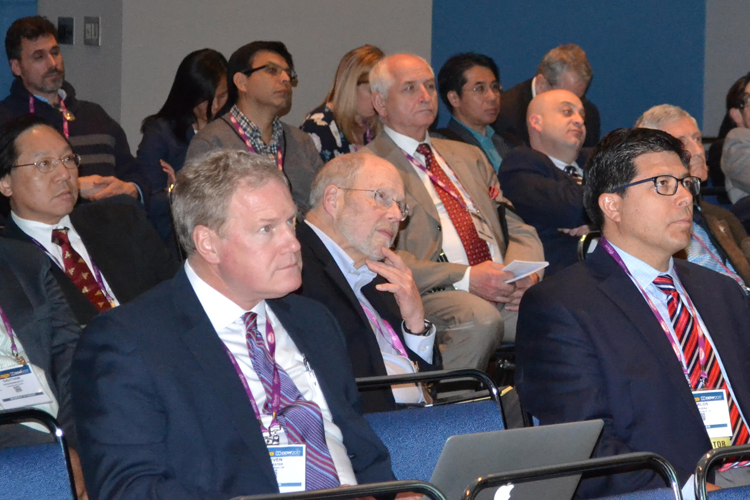Gastric cancers are the second most common cancers in the world, affecting an estimated 22,000 patients every year in the U.S. and resulting in 13,000 deaths. During an SSAT State-of-the Art Conference on Sunday, experts addressed the surgical management of gastric tumors.
“Surgery is the only potentially curative therapy for gastric cancer,” said Jeffrey A. Norton, MD, professor of surgery at Stanford University School of Medicine, Stanford, CA.
Studies of D2 lymphadenectomy for adenocarcinoma of the stomach compared with D1 lymphadenectomy showed that D2 was associated with significantly better outcomes than D1, but D2 was also associated with a higher rate of postoperative morbidity and mortality, Dr. Norton said.
Preoperative or postoperative chemotherapy may be used with surgery to improve outcomes. One study showed that the rate of curative resection was improved with the use of preoperative chemotherapy, which led to a 31 percent reduction in the risk of death.
“Staging of gastric cancer should include laparoscopy,” Dr. Norton said. “Perioperative chemotherapy improves survival in addition to surgery. Postoperative chemotherapy after D2 resection improves survival after surgery. After less than a D1 resection, adjuvant chemotherapy and radiation therapy may improve survival.”
Martin McCarter, MD, professor of surgery at the University of Colorado, Denver, presented an update on the management of gastric GI stromal tumors (GISTs), which result from a mutation in a receptor tyrosine kinase that causes an unregulated growth signal.
“Surgery is the primary therapy,” Dr. McCarter said. “Patients at high risk for complications or metastatic disease may be treated with imatinib. The size, location and mitotic rate of the tumor provide the most useful prognostic information.”
The goals of GIST open surgery include achieving negative margins, avoiding ruptures and preserving function of the GI tract. Many gastric GISTs are amenable to laparoscopic wedge resection, which provides enhanced recovery and excellent outcomes, Dr. McCarter said.
Kaitlyn J. Kelly, MD, assistant professor of surgery at the University of California, San Diego, discussed the management of gastric neuroendocrine tumors (NETs) that occur in the oxyntic gastric mucosa.
There are four subtypes of NETs: Type I, the most common subtype that occurs in patients with pernicious anemia or hypergastrinemia; Type II, which accounts for 5 to 10 percent of gastric NETs; Type III, accounting for 15 to 20 percent of gastric NETs; and Type IV, which are highly malignant tumors and make up less than 5 percent of NETs.
Endoscopic resection for types I and II tumors results in excellent to good outcomes, Dr. Kelly said, while surgical resection for types III and IV tumors often results in poor outcomes. Type IV tumors may be treated with surgery and/or liver-directed palliative therapies.
“A recent series of 43 patients with World Health Organization grade-three NETs treated with surgery in China showed a five-year survival rate of 35 percent,” Dr. Kelly said.



